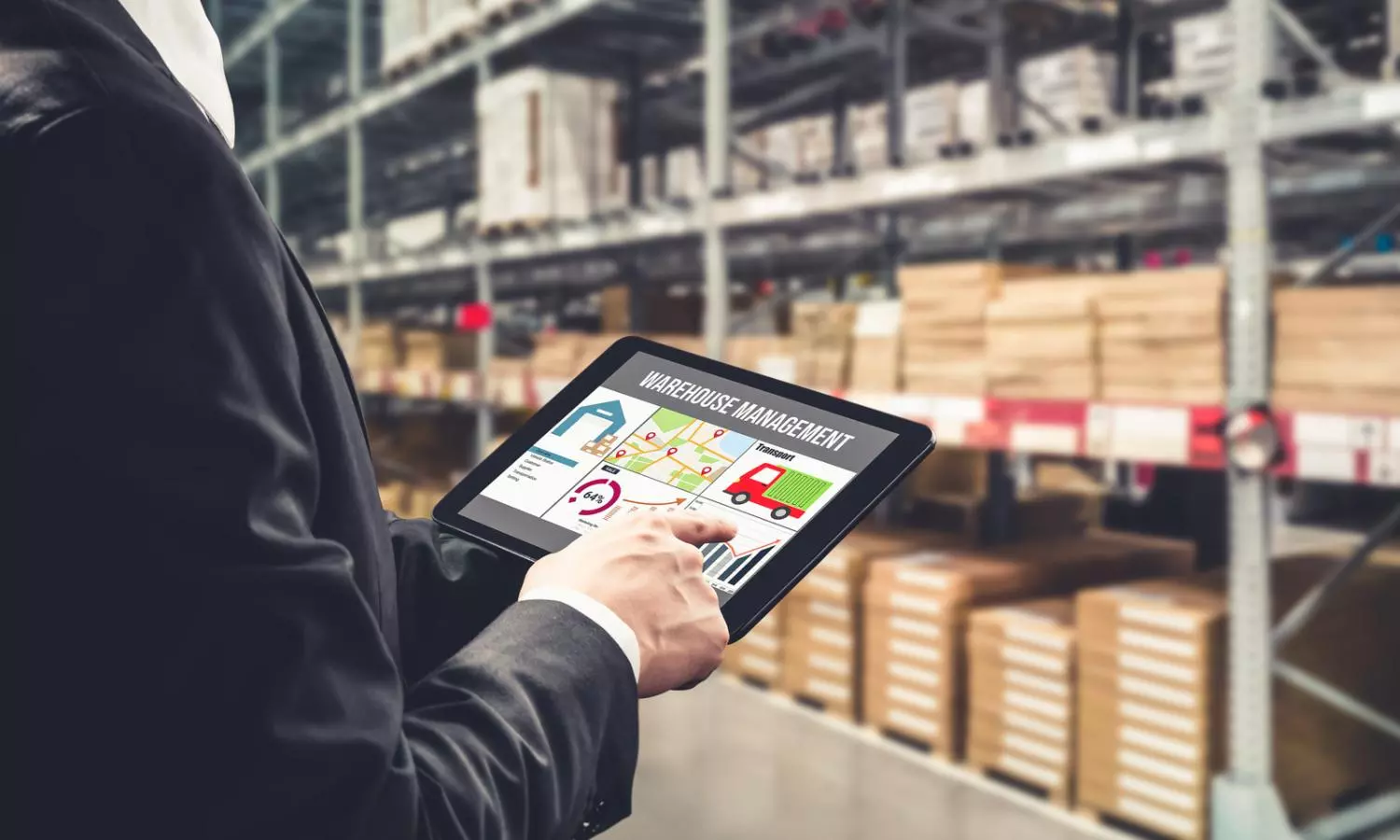From bytes to billions: How data is driving India’s logistics

India's logistics market, projected to reach $557.4 billion by 2032, is poised for transformation through data-driven decision-making. With ongoing digital and infrastructural modernisation, the logistics sector is central to India's growing status as a global economic power.
In recent years, India has emerged as a global economic powerhouse, with its logistics sector playing an important role in this transformation. As the country continues to digitise and modernise its infrastructure, data-led decision-making has become increasingly crucial in optimising logistics operations.
India's logistics market overview:
India's logistics sector is one of the largest globally and is set to grow further according to data from IMARC Group, the market is set to reach $557.4 billion by 2032, exhibiting a growth rate (CAGR) of 7.85 per cent during 2024-2032.
Key factors contributing to market growth include the significant expansion of e-commerce and online retail, the implementation of supportive government policies that encourage logistics services adoption, and emerging technological advancements, mentions the report.
Challenges in the Indian logistics sector:
Despite its size and growth potential, the Indian logistics sector faces several challenges. The industry remains highly fragmented, with numerous small and medium-sized players competing alongside larger firms. Although improvements are being made, India's infrastructure still falls short in many areas, causing inefficiencies and delays.
“The infrastructure in India significantly influences the adoption and effectiveness of both barcode and Radio Frequency Identification (RFID) technologies in logistics. While major urban areas benefit from advanced logistics networks, including modern ports, highways, railroads, airports, warehouses, and distribution centres, remote regions often face challenges such as inconsistent internet connectivity, power outages, and limited access to logistics facilities. These hurdles can hinder the seamless implementation and operation of barcode and RFID systems, affecting supply chain efficiency,” says Praveen Kishore, Chief Transformation Officer, Bar Code India.
Bar Code India specialises in providing solutions related to barcoding, RFID, and automated identification systems. The company offers a wide range of products and services to businesses across various industries.
“The Indian logistics market presents unique challenges and opportunities, where visibility (our ability to see) and agility (our ability to respond) are crucial.”
Nitish Rai, FreightFox
Recently, at the annual convention and 95th Annual General Meeting (AGM) of the Federation of Indian Chambers of Commerce and Industry (FICCI), Union Minister Nitin Gadkari, Minister of Road Transport and Highways of India, committed to reducing logistics costs — from the current 16 per cent of GDP to a target of up to 9 per cent by the end of 2024. Comparing this target to developed economies, where logistics costs range from 8 to 10 per cent of GDP, this highlights significant room for improvement.
However, the National Council of Applied Economic Research (NCAER) reported that logistics costs in India ranged from 7.8 per cent to 8.9 per cent of GDP for the 2021-22 period.
Logistics cost as a percentage of GDP is a metric used to measure the efficiency of a country's supply chain and transportation infrastructure.
Additionally, many smaller players have yet to fully adopt digital solutions and data-driven approaches, which limits the sector's overall efficiency.
“The Indian logistics market presents unique challenges and opportunities, where visibility (our ability to see) and agility (our ability to respond) are crucial. Imagine driving with a completely blackened windshield—visibility is impaired, increasing the risk of adverse scenarios. On the other hand, having a clear windshield but lacking driving skills means you can see but not respond effectively,” says Nitish Rai, Founder and CEO, FreightFox.
FreightFox, a tech-focused start-up in the Indian logistics sector, is developing products to create an end-to-end enterprise freight procurement and management platform that leverages predictive and proactive insights.
The rise of smart logistics in India:
The Indian logistics sector is witnessing a paradigm shift towards smart, intelligence-led operations, driven by a confluence of factors. The government's push for digitisation through initiatives like Digital India and the National Logistics Policy has created a conducive environment for technological adoption. Simultaneously, the e-commerce boom has driven the need for more efficient and data-driven logistics solutions to meet growing consumer demands. According to Statista, the e-commerce industry in India is projected to reach $300 billion by 2030.
“Barcode technology plays a crucial role in this ecosystem by accurately tracking and managing assets, inventory, and shipments.”
Praveen Kishore, Bar Code India
“The rapid growth of digital infrastructure, supported by initiatives like Digital India, is helping address challenges in the logistics sector. As internet connectivity improves and logistics infrastructure modernises, barcode and RFID technologies are widely adopted. RFID, in particular, offers advantages over barcodes in environments where large volumes of goods need to be tracked without direct line-of-sight scanning. With the expansion of Transportation Management Systems (TMS), Electronic Data Interchange (EDI), and integrated supply chain systems, both barcode and RFID technologies are enabling better tracking, real-time inventory management, and enhanced visibility across all modes of transportation,” says Kishore of Bar Code India.
“The focus on digitisation is helping improve the overall effectiveness of these technologies, driving more efficient, transparent, and scalable logistics operations throughout the country.”
Interem Relocations, a prominent player in the logistics industry, offers valuable insights into this transformational shift with modern solutions. Vishal Agarwal, Group CEO of Interem Relocations, states:
“By leveraging data and tech driven approaches, we have significantly streamlined operations, enhanced customer satisfaction, and optimised logistics processes. For instance
Real-time visibility and tracking: We use GPS devices to monitor the location and status of shipments in real-time, providing accurate updates to clients and proactively addressing potential issues.
Optimised route planning and scheduling: Advanced route optimisation software determines the most efficient routes for our shipments, considering factors such as traffic conditions, distances, and delivery times. We employ dynamic scheduling based on real-time data to adjust our schedules and ensure timely deliveries despite unexpected changes.
Improved inventory management: Through analysing historical data and market trends, we accurately predict demand for our services, optimising inventory levels and avoiding stockouts or excess inventory. Data analytics also helps us identify inefficiencies in our warehouse operations, improving storage layouts, streamlining processes, and reducing costs.
Optimised resource allocation: Data analytics helps us identify areas where we can reduce costs, such as optimising transportation routes or improving warehouse efficiency.”
“We are exploring the use of AI and machine learning algorithms to automate tasks, optimise processes, and predict future trends.”
Vishal Agarwal, Interem Relocations
Mentioning technologies and software for data management, Rai of FreightFox states “FreightFox uses several advanced technologies for data collection, analysis, and visualisation. We deploy fully automated data scraping methods and Robotic Process Automation (RPA) to acquire data. Our Application Programming Interface (API) ecosystem further streamlines this process.
For data visualisation, we offer intelligent dashboards tailored to each customer’s specific objectives and audience. Our dashboards are designed to meet the unique needs of different stakeholders.”
Guaranteeing data accuracy and consistency:
Amidst this rapid transformation, driven by technological advancements and increasing globalisation, ensuring data accuracy and quality is crucial. Inaccurate or incomplete data can lead to operational inefficiencies, financial losses, and damage to customer relationships. To address these issues, companies are adopting technologies like data integration platforms, AI, and cloud-based solutions.
“Data accuracy and quality are critical for us. We obtain data from highly reliable sources via API, which eliminates manual intervention and ensures consistency across the data acquisition process. Our data comes from system-generated sources or various integration layers we've established to maintain data integrity and accuracy,” says Rai of FreightFox.
“We employ a built-in diagnostic system to check for anomalies based on historical trends. For instance, if an agricultural dataset shows 5,000 metric tonnes of onion arrivals in Maharashtra for a month, we cross-reference it with historical data and seasonal patterns. A significant discrepancy, like the previous year’s data showing 500 metric tonnes for the same month, would be flagged as an anomaly. We then validate and correct these anomalies to ensure data accuracy,” explains Rai.
Future trends and opportunities:
"At Interem Relocations, we embrace innovation to enhance logistics. Technologies like Artificial Intelligence (AI) and Machine Learning (ML) improve predictive analytics, automation, and decision-making. IoT provides real-time visibility, while 5G and edge computing enable faster data processing and analytics. Cloud computing and big data ensure scalable, secure operations,” says Agarwal of Interem Relocations.
He also highlighted sustainable logistics, cybersecurity, and emerging technologies such as Augmented Reality (AR) and Virtual Reality (VR) “Sustainable technologies like electric vehicles and green warehousing are key to data-driven decisions, alongside robust cybersecurity to protect logistics data. Additionally, AR and VR enhance employee training and enable remote facility inspections, improving efficiency and reducing costs."
On a similar note, Bar Code India is also driving innovation in supply chain management.
“As we look to the future, we are committed to pushing the boundaries of technology to redefine what’s possible in supply chain management. Our focus will continue to be on harnessing cutting-edge technologies such as AI, machine learning, and IoT to create more intelligent, agile, and sustainable supply chains,” says Kishore of Bar Code India.
“Recently, we launched Dristi, an IoT-based RFID reader designed to revolutionise supply chain operations with best-in-class performance. Equipped with a powerful processor, expansive memory, and in-built 4G-LTE/Wi-Fi options, Dristi sets a new standard for RFID technology with its top-tier IP rating, ensuring reliability across diverse environments. This is just one example of our forward-thinking approach.”
Regarding effective tools for data-driven logistics, Rai of FreightFox notes, “Among various effective tools, the Unified Logistics Interface Platform (ULIP) stands out. ULIP is a government initiative aimed at enhancing logistics efficiency and productivity nationwide. It has played a crucial role in democratising critical data, allowing us to enhance various aspects of logistics, including cost, service, capacity, and sustainability. This, in turn, helps deliver superior logistics solutions across these dimensions.”
The future of Indian logistics is intrinsically linked to its ability to harness data effectively. As the sector continues to evolve, those who can leverage data-driven insights will be best positioned to thrive in this dynamic and growing market.

Parijat Sourabh
As a news correspondent at STAT Media Group, I cover stories on logistics, aviation, and air cargo. Feel free to contact me at parijat@statmediagroup.com


